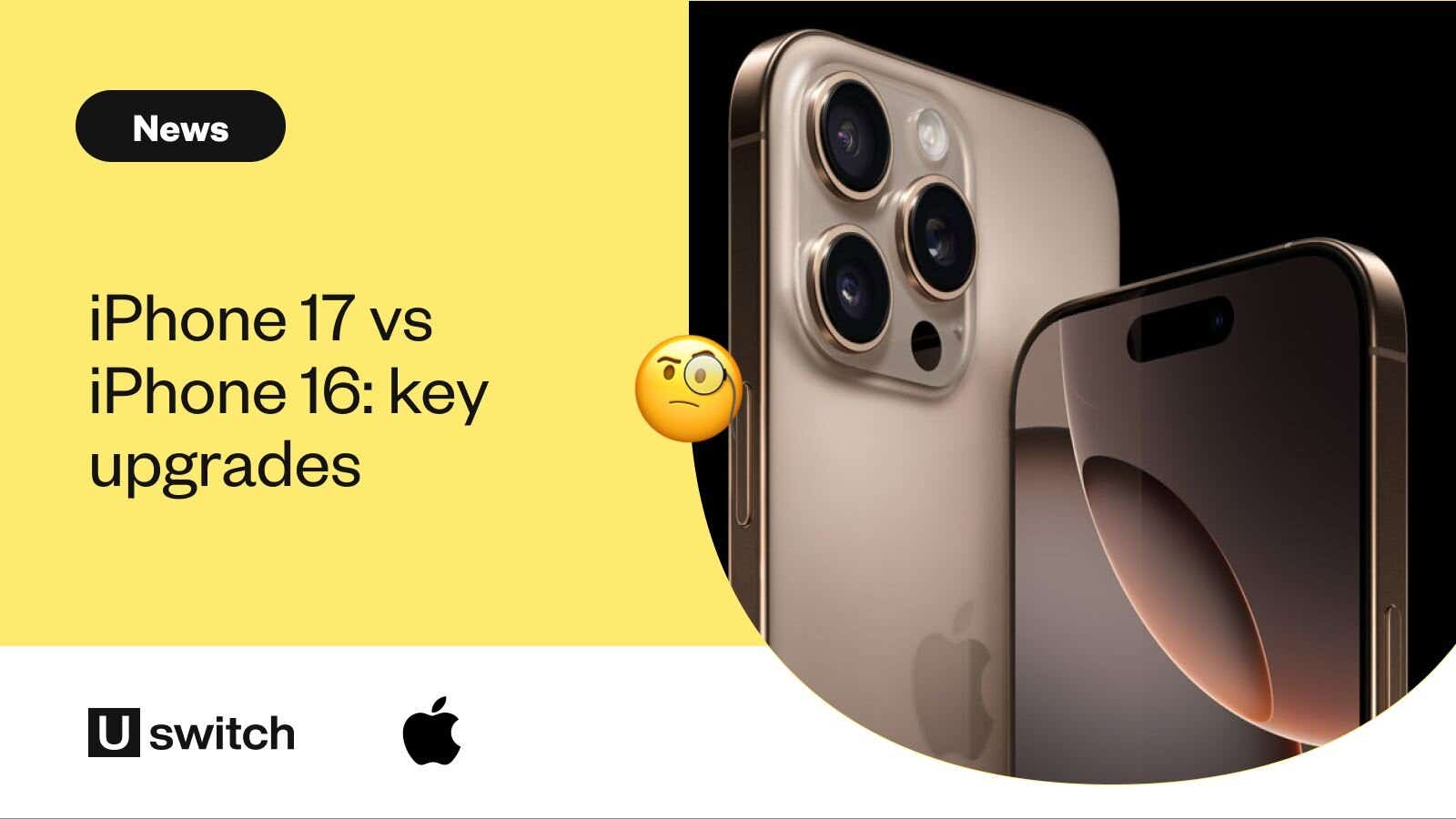Apple iPhone 17 vs iPhone 16: key differences explained


Apple’s iPhone 17 series is set to take the baton from the iPhone 16 with meaningful improvements to design, displays, cameras and charging speeds. While the two generations share Apple’s signature style, there are some important distinctions buyers should know about.
iPhone 16 vs iPhone 17: at a glance
| Feature | iPhone 16 Series | iPhone 17 Series (Expected) |
|---|---|---|
| Display | 60Hz OLED (base), 120Hz ProMotion (Pro) | 120Hz ProMotion OLED across all models |
| Design | Standard thickness, square camera island | Slimmer design, thinner Air model, horizontal camera |
| Chipset | A18 / A18 Pro | A19/ A19 Pro |
| RAM | Up to 8GB | Up to 12GB (Pro models) |
| Front camera | 12MP | 24MP |
| Rear camera | 5X zoom (pro Max) | Up to 8X zoom (Pro Max), 8K video |
| Connectvity | Wi-Fi 6E | Wi-Fi 7 |
| Charging | 15W Magsage wireless | 25W MagSafe wireless, up to 50W wired, reverse wireless on Pro |
| Software | iOS 25 | iOS 26, expanded Apple Intelligence |
| Battery | Incremental improvements | Larger batteries |
Design and display

Apple is making the iPhone 17 thinner and sleeker, with whispers of an “iPhone 17 Air” measuring just 5.5mm thick. Pro models are expected to feature a redesigned horizontal camera bar, similar to what can be found on the back of a Google Pixel 10, instead of the square camera island that has been a mainstay since the iPhone 11.
Displays are also getting a welcome and exciting upgrade. The entire iPhone 17 range will feature 120Hz ProMotion OLED panels, making animations, scrolling and gaming smoother than ever before on the base model. This is a big leap from the iPhone 16’s standard 60Hz screen on non-Pro models. Slimmer bezels and refinements to the Dynamic Island are also expected.
Performance
Under the hood, the iPhone 17 series will likely introduce the A19 and A19 Pro chips, offering improved speed and efficiency. RAM is expected to increase to 12GB on Pro models, compared with 8GB on the iPhone 16.
Connectivity also gets a boost, with Wi-Fi 7 support offering faster speeds and lower latency, compared to the Wi-Fi 6E found on the iPhone 16.
Camera upgrades

Apple is doubling down on selfies, with the iPhone 17 lineup tipped to include a 24MP front camera, up from 12MP on the iPhone 16.
The iPhone 17 Pro Max may offer 8x optical zoom (up from 5× on the iPhone 16 Pro Max) and could introduce 8K video recording and more innovative AI-driven camera features after last year's disappointing lineup.
Charging and battery
Charging speeds are set to improve significantly. The iPhone 17 will support 25W MagSafe wireless charging and up to 50W wired charging, compared with the iPhone 16’s 15W wireless charging cap. Pro models could even introduce reverse wireless charging, letting users top up accessories like AirPods on the back of the phone.
Battery sizes are expected to see modest increases, but efficiency gains from the new chip and LTPO displays should deliver better real-world performance.
Software and AI
The iPhone 17 will launch with iOS 26, introducing a fresh “Liquid Glass” interface and deeper integration of Apple Intelligence. Expect smarter photo and video editing, real-time translations, generative emoji, and more on-device AI capabilities.
The iPhone 16 runs iOS 25 but will be upgradeable to iOS 26, albeit without some of the AI features that may be reserved for the newer hardware.